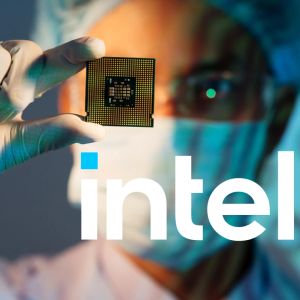Intel stock plunges after CEO’s strategy shift
3 min read
On Friday, Intel shares tumbled 8.5% as remarks from CEO Lip‑Bu Tan prompted concerns that he’s emphasizing expense reductions at the expense of the company’s technical supremacy. In the Q2 earnings call, Tan said he’s pausing some factory projects and being more cautious with spending. He criticized the investments made under former CEO Pat Gelsinger as “excessive and unwise,” adding on a conference call, “I do not subscribe to the belief that if you build it, they will come.” Under Gelsinger’s leadership, Intel had pursued a transformation into a prominent foundry for third‑party clients, particularly emphasizingthe development of the advanced 14A node. However, during Thursday’s conference, Tan signaled that Intel’s deployment of that process will proceed in a limited, step‑by‑step fashion. He said they won’t start full-scale 14A production until enough customers are on board. According to Bloomberg that announcement triggered asell‑off, driving the stock to $20.70 in New York, its largest single‑session decline in more than a quarter‑year. Investors worry that putting off new manufacturingsteps means Intel is giving up its long‑held lead in chipmaking. Intel’s plans stir acquisition talk Intel’s recent challenges have fueled speculation about potential divestitures or acquisitions, yet no definitive suitor has surfaced. Interested parties for its fabrication facilities, such as TSMC, have reportedly withdrawn their interest. Tan reiterated his intention to maintain an integrated manufacturing and design organization, while divesting smaller subdivisions. This week, Intel announced plans to carve out its networking group as an independent entity. The company added that it is courting strategic backers, without disclosing identities, a move initially revealed by CRN. In the filing, Intel projected Q3 revenue between $12.6 billion and $13.6 billion, yet fell short of profit targets. It warned of narrower margins leading to a forecasted breakeven quarter, below the 4‑cent per share gain analysts anticipated. In Q2, Intel reported revenue of $12.9 billion, virtually unchanged year‑over‑year and surpassing the $11.9 billion consensus. The quarter’s results included a 10 cent per share loss versus the 1 cent profit Wall Street analysts had anticipated. Intel lags behind rivals despite 13% stock gain By Thursday’s market close, Intel’s share performance had risen 13% year‑to‑date, in line with the broader chip manufacturing sector. But Nvidia and AMD have done even better, thanks to their lead in AI chip design. Tan’s immediate focus remains on stabilizing Intel’s balance sheet. To date, he has enacted widespread layoffs and reduced capital expenditure plans. The firm announced it would suspend its planned facilities in Germany and Poland and decelerate development at the Ohio site. Management confirmed approximately $18 billion of capital investment for new fabrication sites and machinery in 2025, with less spending next year. Since his March appointment, Tan conceded that Intel must rebuild its competitiveness in PC and server CPU markets. He is likewise formulating a strategy to enter the AI accelerator arena, currently led by Nvidia. Intel said PC demand got a boost because manufacturers stocked up in advance of possible tariffs, but it still lost market share in both its PC chip business and its outside foundry operations. CFO Dave Zinsner added that the expected economic slowdown never arrived, helping lift orders, and noted some customers pulled orders forward to avoid those tariffs. Intel’s PC division delivered $7.9 billion in sales, exceeding the $7.3 billion consensus figure. Data‑center revenue came in at $3.9 billion versus $3.7 billion anticipated, and the foundry segment recorded $4.4 billion, in line with estimates. Previously, Intel established goals to reduce operating expenses to roughly $17 billion in 2025 and $16 billion in 2026, targets it still expects to meet. During Gelsinger’s tenure, Intel invested tens of billions in new fabs to attract external clientele and reclaim its process leadership. In an internal memo sent Thursday, Tan criticized that strategy as overly aggressive, noting that rapid outlays lacked sufficient demand and left production capacities underused. Cryptopolitan Academy: Coming Soon – A New Way to Earn Passive Income with DeFi in 2025. Learn More

Source: Cryptopolitan



